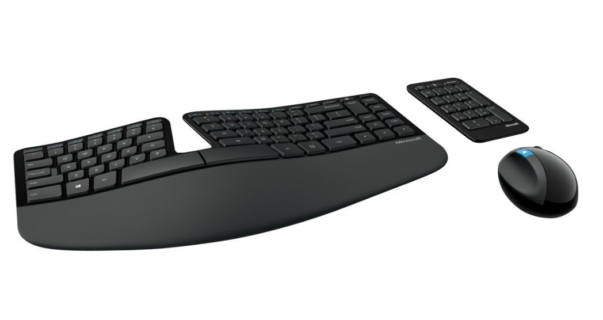Business professionals use their PCs more than ever before. In fact, the average user spends more than 6 hours a day on a computer. How they sit, type, swipe, point, and click — and the products they use to do these things — can affect productivity, comfort, and more importantly, a person’s overall health.
Ergonomically designed keyboards and mice in particular can help improve comfort while working on a PC. While users may experience comfort the moment they start using an ergonomic mouse or keyboard, the long-term benefits of ergonomic hardware may only become fully apparent after they are used for an extended period of time.
Reduce costs and increase productivity
Computer use requires a large number of repetitive actions for long periods of time; damage from repetitive strain injury (RSI), such as carpal tunnel syndrome, can occur as a result of many small injuries from these daily, routine activities.
The costs associated with RSIs to businesses is estimated at $20 billion every year in the U.S., according to the federal Occupational Safety & Health Administration (OSHA).
Fortunately, there are things you can do to help mediate the discomfort and injuries that can be associated with computer use, such as using computer peripherals that are ergonomically designed.
An industry leader for more than 25 years
Microsoft has a long history of leadership in the PC peripherals industry, bringing the world such breakthrough innovations as:
• The first ergonomically designed mouse
• Fixed ergonomic keyboard layout
• Mouse scroll wheel integrated with desktop software
• The padded keyboard palm rest
• And optical mouse sensor, to name just a few
Ergonomically designed products
Microsoft designs devices such as ergonomic mice and keyboards to help users have the best computing experience possible, which is especially important given most people are on their computers frequently, and for long periods of time every day. The company’s products undergo rigorous design and testing processes conducted by an on staff certified ergonomist to ensure they are exceptionally comfortable.
Comfort. A good mouse design pays attention to things like rubber side grips for ease of use, thumb scoops that fit the contours of the hand, and undercuts that make the mouse easy to pick up.
Size. Users should be able to reach all the buttons without straining or arching their fingers, which can lead to fatigue and carpal tunnel syndrome. Smaller mice are good for confined spaces and pack well into a briefcase for travel, while larger mice tend to have more ergonomic benefits and are ideal for a desktop workspace.
How to choose a keyboard
There are many great options for keyboards, depending on specific needs. Here are some things to consider:
Wired or wireless. A wireless keyboard provides more freedom and less clutter on the desktop. However, a wired keyboard is simpler to set up and requires no batteries.
Comfort. There are three main types of keyboards: split, curved, and straight.
- Split keyboards are the least stressful on hands and wrists.
- A curved design combines some of the familiarity of a straight keyboard with some of the ergonomic benefits of a split keyboard.
- And a straight keyboard, with or without palm rests, has a traditional feel without the ergonomic benefits of a split or curved design.
Size. If the keyboard is going to be used in a work environment where the user spends a lot of time in one location, they might want to choose a larger, more ergonomically designed keyboard. However, for traveling and mobile computing, a compact keyboard without the 10-key pad is easy to pack and still provides some ergonomic benefits.
Recommended Microsoft desktops and keyboards








